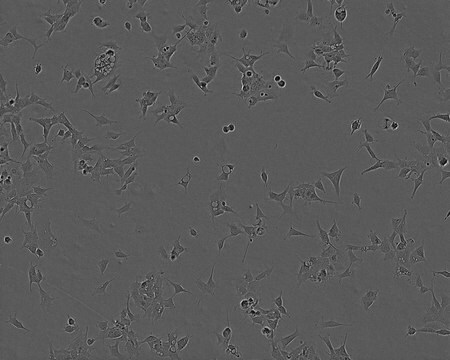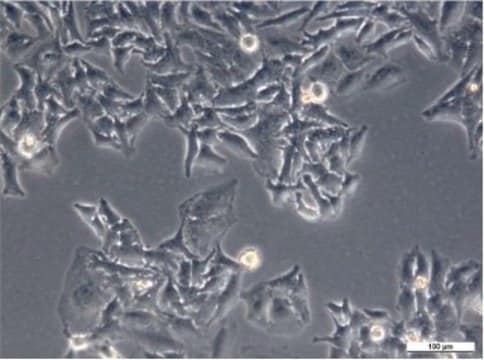MA104
NOTE: Both the cell line and DNA from the cell line may be available for this product. Please choose -1VL or VIAL for cells, or -DNA-5UG for DNA, 85102918, African green monkey kidney, Epithelial
About This Item
Prodotti consigliati
Origine biologica
African green monkey kidney
Descrizione
Convention on the International Trade in Endangered Species of Wild Fauna and Flora (CITES)
Confezionamento
tube of 5 μg 85102918-DNA-5UG
pkg of vial of cells 85102918-1VL
Modalità di accrescimento
Adherent
Cariotipo
Not specified
Morfologia
Epithelial
Recettori
Not specified
Cerchi prodotti simili? Visita Guida al confronto tra prodotti
Origine della linea cellulare
Descrizione della linea cellulare
Please note: The species of origin of the MA104 cell line has been shown to be different from that claimed by the originators.
Whitaker & Hayward (1985) found the cell line to originate from an African green monkey and not a Rhesus macaque as was originally claimed. Whitaker AM and Hayward CJ (1985). The characterization of three monkey kidney cell lines. Develop. Biol. Standard. Vol 60: 125-131. PMID: 4043530. Abstract: Three monkey kidney cell lines, Vero, GL-V3 and MA-104 were subjected to karyological analysis to determine their chromosomal stability and to confirm their species of origin. Although the lines were shown to be relatively stable throughout all of the passage levels that were tested, the species of origin of one of them was found to be different from that claimed by the originators. This finding was supported by data from isoenzyme studies.
Terreno di coltura
Mantenimento delle subcolture
Altre note
Scegli una delle versioni più recenti:
Certificati d'analisi (COA)
It looks like we've run into a problem, but you can still download Certificates of Analysis from our Documenti section.
Se ti serve aiuto, non esitare a contattarci Servizio Clienti
Possiedi già questo prodotto?
I documenti relativi ai prodotti acquistati recentemente sono disponibili nell’Archivio dei documenti.
Il team dei nostri ricercatori vanta grande esperienza in tutte le aree della ricerca quali Life Science, scienza dei materiali, sintesi chimica, cromatografia, discipline analitiche, ecc..
Contatta l'Assistenza Tecnica.



